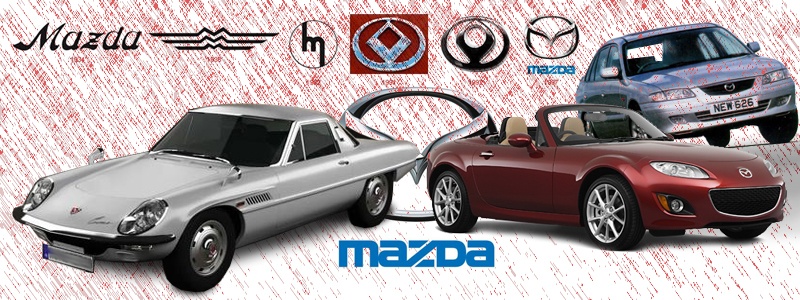Mazda is one of the great success stories
of recent automotive history. While car manufacture
did not begin until 1960, the Hiroshima based
Toyo Cork Kogyo company had been in existence
since 1920, concerned with the manufacture
of motorcycles, machine tools and drilling
equipment. In 1931 the company began the manufacture
of a light truck, and was renamed Mazda, both
in recognition of its founder Jujior Matsuda,
and in honour of Mazda, the god of light.
In
1940 a prototype car was manufactured, but
the countries incursion on Pearl Harbour put
pay to any automotive aspirations of the day.
Amazingly the Mazda facility would only suffer
very minor damage after the B-29 “Enola
Gay” dropped the “little boy” atomic
bomb, although truck production did not re-commence
until the 1950’s.
The first Mazda car
was released in 1960, a micro car powered by
a V-twin air-cooled 21.72ci 356cc engine. Immensely
popular (and affordable), the company would
sell 20,000 in the first year. The next model
inevitably grew in size and stature, the P-360
now featuring a water-cooled engine and available
in either 2 or 4 door body styles. Then came
the Familia, a 4 door sedan fitted with a 782cc
four cylinder engine; outwardly the car looked
very conventional, but look a little closer
and you could see the Mazda engineers had thought
outside the square, the engine being manufactured
from light alloy and the options box including
either a 4 speed manual or 2 speed automatic
transmission.
The Familia was responsible for
not only raising the profile of Mazda in it’s
home market, but for pushing it to third place
on the Japanese sales charts, some 80,000 being
sold in 1965 alone. Bertone was commissioned
to style a larger variant to help fill out
the Mazda line-up, the 929 (also known as Cosmo
or Luce) was fitted with a 1.5 liter engine,
but again there was a difference, this time
the options box included a very unusual offering – the
Wankel rotary.
Mazda had for some time shown
interest in the rotary engine, and had finally
bought a licence from NSU to build their own
version after shipping samples from Germany.
The first Mazda to be fitted with a rotary
was the Cosmo 110S coupe, it also sharing the
honour of being the first mass-produced rotary
powered car in the world. By 1978 Mazda had
sold over 1 million rotary powered cars. |
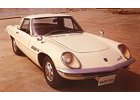 |
|
1966 - 1972
The Cosmo was Mazda's rather futuristic car and was designed
from the ground up. It was perceived as Mazda's first
foray into the world of high-performing excitement machines. More >> |
 |
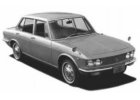 |
|
1967 - 1974
In many regards the 1500 was the car for the time, bridging the gap between large family 6 cylinders and the small 4 cylinder variety, this market segment dominated by the Japanese but now being challenged by locals such as the HB Torana and Ford Escort. More >> |
 |
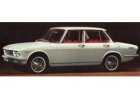 |
|
1967 - 1974
Even a superficial examination of the Mazda 1500 DeLuxe showed this was a quality made car, parallel perhaps with BMW in Germany or Rover in the UK, although it lacked the Rover 2000's technical enterprise. More >> |
 |
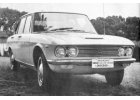 |
|
1968 - 1974
The Mazda 1800 was aptly called "The Leading Lady", it at the time heading the magnificent range of Mazda Sedans.
By putting a powerful 1800cc 104 bhp engine into the delightfully styled Mazda 1500 body shell, the engineers at Toyo Kogyo had given the chassis the type of power it deserved, and needed. More >> |
 |
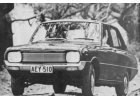 |
|
1968 - 1974
In 1968 the Mazda 1200 set a new bench mark for affordable quality in the small car segment, it then being the cheapest 4 door car on the market. The all-alloy engine was specifically designed by the Mazda engineers for the 1200, and the 73 horsepower engine was enough to push the car to 90 miles an hour, for those who dared. More >> |
 |
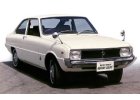 |
|
1968 - 1974
The Mazda R100 Rotary Coupe was powered by the dream engine of the 1960's - an engine so small two would fit into the space of most big sixes, an engine so smooth you needed a rev counter to tell it was going. And the most amazing fact of all - it developed the horsepower of piston engines two to three times its size. More >> |
 |
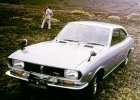 |
|
1970 - 1978
The Mazda RX2 is credited with being the first "normal"
car to be fitted with a rotary engine. Available as a
4 door sedan or 2 door coupe, the RX2 quickly gained
a reputation for good performance and poor petrol economy... More >> |
 |
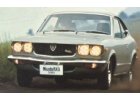 |
|
1972 - 1978
The good folks at Mazda have proven to be rather adept at manufacturing extrodinarily exciting cars -
todays RX8 and MX5 both being brilliant cars to drive while remaining relatively affordable. And back in 1972 the affordable pocket rockets were undoubtedly the Mazda RX2 and RX3. More >> |
 |
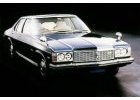 |
|
1975 - 1977
The intelligent and advanced concept of global outsourcing
applied to the development of the Mazda Roadpacer AP offered
a high-quality small volume mass-produced vehicle with
a shortened development time and less cost in terms of
investment. Well - that was the theory... More >> |
 |
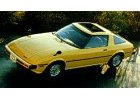 |
|
1979 - 1985
By the early 1970's Mazda had proved its committment
to the rotary engine, in 1971 alone Mazda building over
200,000 rotary-powered vehicles. However the road for
the rotary has never been smooth, and for Mazda things
took a turn for the worse when the oil crisis of 1973 turned peoples attention to the poor fuel economy of the
rotary. More >> |
 |
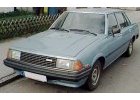 |
|
1979 - 1982
The Mazda 626 series 1 proved to be a durable and reliable
car, and was influential in developing Mazda's enviable
reputation for quality. More >> |
 |
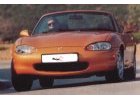 |
 |
1988 -
The MX5 owes much to the Lotus Elan, as that is where
its designers sought inspiration - although Mazda always
wanted to ensure that its car would be more reliable
and solid than the little Lotus. They also wanted to
ensure their new sports car offered modern "sedan"
type comfort levels, despite the inevitable noise and
climate problems associated with a "rag top". More >> |
|
